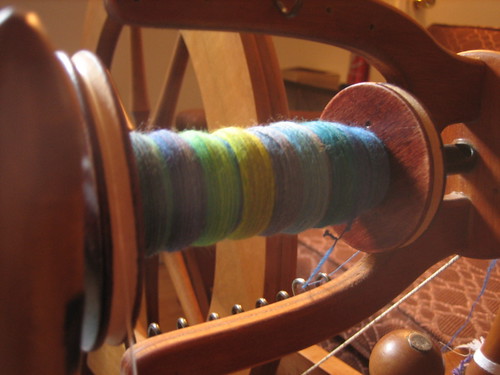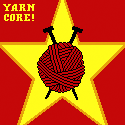First of all, there's the sash I was wearing when I met the Lieutenant Governor in March last year. It's the most basic of the "Métis" sashes, and the most common. They're loom-woven, more than one sash wide, and cut and serged along what would normally be the selvedges. The ends are just knotted and left fringy.
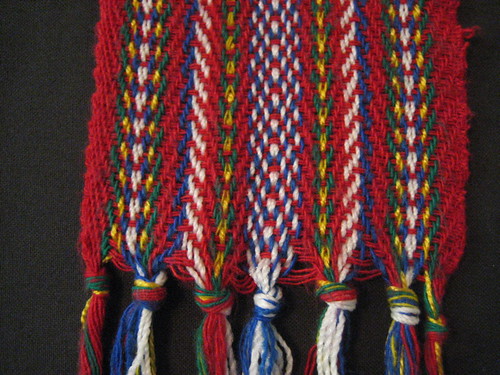
Next, there's a variation on the basic, and it's one of Marksman's sashes; this one is the same pattern as the one above, but with blue in the weft instead of red. It's made the same way, though.
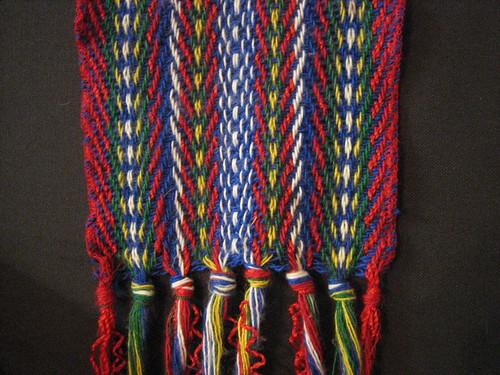
Now comes the fun part. When I was in Australia (of all places, I know) I got bored in the hostel in a small town in the Blue Mountains, during a rainy day. So I decided to make myself a hat band, and fingerwove it out of embroidery floss, in all the (Canadian) scout colours. I don't have a picture of it here, but when I got home, I started to do more weaving. In wool, this time, because it holds the weave better, unlike slippery cotton. So I have a couple of examples of finger weaving experiments and practice. First, the basic chevron. It's a simple V, but you can build a lot of things from just a V.
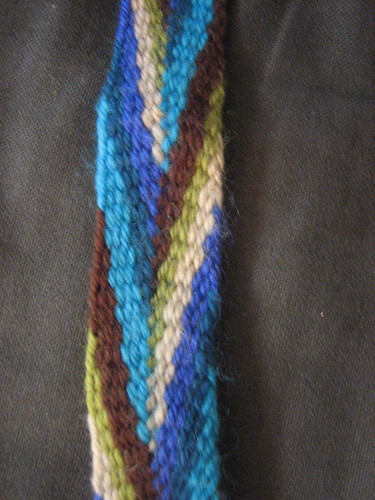
Next, comes the basis of the Assomption sash, the lightning pattern. This is not a good rendition of it, but I'm still learning.

And then I got bored, and started something a little different... This is (essentially) a chevron band, with simple diagonal bands to either side. Occasionally the two sections switch, and the outside becomes the inside. I like it. I want to to something similar, I think, on a larger scale. Now I just have to find the patience.
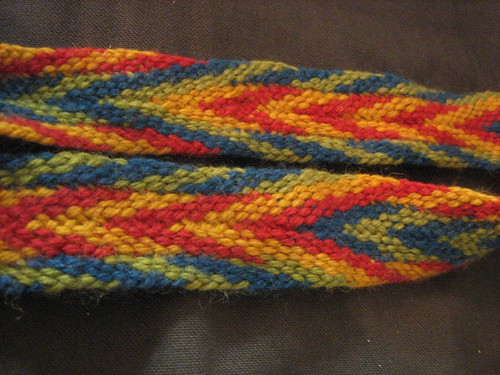
For anyone who's interested in learning how to finger weave, I have 2 books to suggest, both of which I've used. The best I've found so far is actually also the most compact, but it has the best illustrations and photos, with the clearest most concise directions. It's Carol James' Fingerweaving Untangled and while compact it's also brilliant, with tips about classic beginner mistakes. The other book is Gerald Findley's Fingerweaving Basics which is also a decent reference, again with colour pictures and illustrations, but some of them are less clear than Carol's. In any case, there's nothing to do bu try, right?


